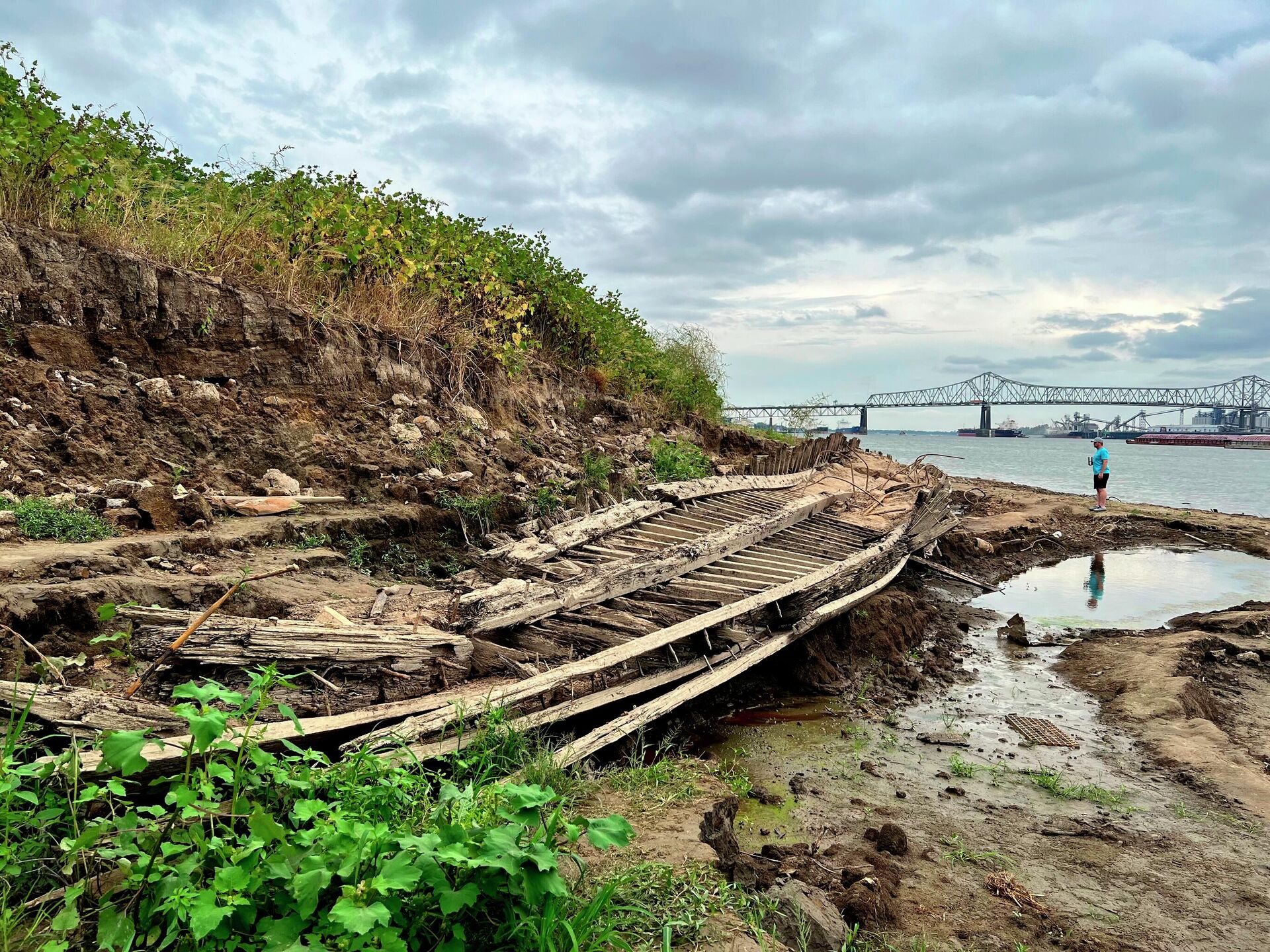Low US Water Levels Reveal Site of 1915 Shipwreck Along Mississippi River
03:40 GMT 19.10.2022 (Updated: 20:18 GMT 19.10.2022)

© AP Photo / Stephen Smith
Subscribe
The discovery is the latest caused by drought-battered water levels, which have plagued many parts of the country this summer — most notoriously Lake Mead, which has offered up several sets of skeletal remains during this year’s dry season. The US Drought Monitor says that more than 55% of the US is experiencing drought.
Archeologists believe a newly rediscovered Mississippi shipwreck to be the remains of the Brookhill Ferry, which transported people, wagons, and livestock from one side of the river to the other before the construction of major bridges – that is, until it sank during a storm in 1915.
Roughly one-third of the boat is said to be visible along the shoreline of Louisiana’s Baton Rouge, which is significantly more than what was visible in the 1990s - the last time low waters exposed the wreckage, according to state archaeologist Chip McGimsey.
"They did some limited investigations and could look at very small pieces – basically sort of one or two foot wide parts of it – to try and get an understanding of how it was constructed and how old it was,” McGimsey said.
“At that time, the vessel was completely full of mud and there was mud all around it so only the very tip tops of the sides were visible, so (archaeologists) really didn’t see much. They had to move a lot of dirt just to get some narrow windows in to see bits and pieces.”
The archaeologist also told local news agencies that the ship’s hull, which is currently 90% exposed, would be studied and used to create renderings of how it was believed to have appeared in its prime.

A shipwreck is exposed along the banks of the Mississippi River in Baton Rouge, due to low water levels, on Tuesday, Oct. 18, 2022, in Baton Rouge, La. Archaeologists believe the ship is a ferry that was built in the late 1800s or early 1900s and sunk in 1915.
© AP Photo / Stephen Smith
"For the most part, there are not good documents on boat building, especially once you get back into the area of wooden ships," McGimsey told one local agency in an interview. "They have a lot of individuality in these boats, and there are so few of them remaining. This is a rare example of one from around 1900."
McGimsey has been surveying the wreck for the last two weeks, ever since Baton Rouge resident Patrick Ford spotted the ship along the edge of the river’s receding waters. He recounted the experience to local authorities: "This past Sunday I was out here looking and realized the rest of the shore had washed away and there was an entire ship there … I immediately texted friends and was like, 'Holy moly, I think I found a ship, a sunken ship!'”

A man walking along the Mississippi River in Baton Rouge, La., stops to look at a shipwreck revealed by the low water level on Monday, Oct. 17, 2022. The ship, which archaeologists believe to be a ferry that sunk in the late 1800s to early 1900s, was spotted by a Baton Rouge resident walking along the shore earlier this month.
© AP Photo / Sara Cline
According to McGimsey, the Brookhill was the night ferry, and it had a sister ship named the Istrouma that did the daytime runs across the Mississippi until a hurricane on September 29, 1915 sank both ships. The find is important, according to the scholar, because not many records or manuals exist detailing how wooden ships from that era were put together, and not many of them remain.
Renee Erickson, an archeologist who also works for the state of Louisiana, said that the remains of the ship comprise almost a quarter of what the ship was like when whole. Though the vessel – a steamer – wasn’t very special, the scientists want to learn as much as they can about it before the water rises to cover it again.
Specialist Morgan Saltus, who focuses on boats, echoed those statements: "So many times you have a pile of boards. Well, that pile of boards represents history. We can't bring up every boat. We don't have places to put them, but we need to document them before they're lost."



